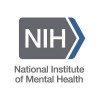
Low-Intensity Focused Ultrasound for Treatment-Resistant Depression
Major Depressive DisorderTreatment Resistant DepressionThe Investigators are proposing to demonstrate safety and efficacy of LIFUP for treatment resistant major depressive disorder in a ten-patient pilot study. LIFUP is an emerging treatment with the advantage of being able to target subcortical transcranial targets, which may have superior efficacy or a shorter treatment course compared to other available treatments such as transcranial magnetic stimulation. This study will investigate the effect of this stimulation on the left subgenual cingulate cortex, a highly connected node in the depression network that is correlated with clinical symptomatology.

Developping a a Brain-controlled Art App to Ease Residual Symptoms of Depression
DepressionThe study evaluate the effect of 10 neurofeedback sessions on the residual symptoms of depressive patients in partial remission.

Study to Assess the Effects of Oral NMRA-335140 Versus Placebo in Participants With Major Depressive...
Major Depressive DisorderThis is a randomized, double-blind, placebo-controlled, multicenter study to evaluate the effects of NMRA-335140 (formerly BTRX-335140) on symptoms of depression in participants with Major Depressive Disorder (MDD). The study design consists of a Screening Period (up to 28 days), and a 6-week Treatment Period (during which participants will receive either NMRA-335140 or placebo). At the completion of the 6-week Treatment Period, participants who complete the study, provide informed consent, and meet the eligibility criteria may enter an open-label extension study (NMRA-335140-501).

Clinical Predictors of Intravenous Ketamine Response in Treatment-Resistant Depression
Treatment Resistant DepressionMajor Depressive Disorder1 moreFor patients with treatment-resistant depression (TRD), a single low dose of intravenous (IV) ketamine can help relieve symptoms as quickly as 24 hours later. The main problem with IV ketamine for TRD is that the effect is short-lived, lasting only days to 1 or 2 weeks. Furthermore, IV ketamine is a resource-intensive treatment, and the safety of long-term, repeated use for depression is unknown. To provide this treatment in a safe and cost-effective way, Investigators must allocate it efficiently to those patients who have the greatest need and probability of benefit. Therefore, this project aims to find clinical features (signs, symptoms, and parts of a patient's history) that will help predict which patients are most likely to respond to a single dose of IV ketamine for TRD. This will help guide patient selection and triaging. Investigators will recruit 40 participants with TRD over one year, and randomize them to one of two conditions (ketamine followed by an active placebo 3-weeks later, or vice versa). With clinical data collected through detailed interviews and questionnaires, this study design will let us evaluate how well such factors predict (A) rapid response at 24-hours, and (B) sustained response at 7 and 14 days.

Transdiagnostic CBT-I on Comorbid Depression and Insomnia
InsomniaDepressionThis randomized control trial (RCT) aims at comparing the efficacy of self-help cognitive behavioural therapy for insomnia (CBT-I) and self-help cognitive behavioural therapy for depression (CBT-D) on comorbid depression and insomnia. It addresses the research gap of treating comorbid depression and insomnia with a transdiagnostic approach (i.e., CBT-I) rather than a disorder-specific approach (i.e., CBT-D). Insomnia is a transdiagnostic process that is common to many psychiatric disorders. It is not only a symptom for depression, but also a factor that contributes to the onset and maintenance of depression. There were limited studies comparing the efficacy of self-help CBT-I to self-help CBT-D among adults with comorbid insomnia and depression (e.g., Blom, 2015). Hence, this study will serve as one of the pioneering attempts to elucidate the role of self-help transdiagnostic insomnia therapy in reducing depressive symptoms. Prior to all study procedures, eligible participants will be required to complete an online informed consent. Around 100 eligible participants aged between 18 and 65 with a Patient Health Questionnaire-9 score ≥ 10 indicating at least moderate level of depressive symptoms and Insomnia Severity Index (ISI) score ≥ 10 indicating clinical level of insomnia symptoms will be randomly assigned to either Internet-based CBT-I (n = 50) or Internet-based CBT-D (n = 50) in a ratio of 1:1. Eligible participants in the CBT-I group will receive the intervention "iSleepWell" via the a digital mental health platform Next Stop, Wellness! for 6 consecutive weeks, whilst the CBT-D group will receive the intervention 'LIFE FLeX' via the same platform for 6 consecutive weeks. The outcomes of interest include depressive, anxiety, and insomnia symptoms, functional impairment, quality of life, intervention credibility and acceptability at baseline (Week 0), immediate post-treatment (Week 7), and 12 weeks follow-up (Week 19) assessments.

A Study of Mianserin in Combination With SSRIs in Depression With Sleep Problems
DepressionPatients with depression with sleep problems have functional abnormalities of 5-HT and NE neurotransmitters, and the NaSSA class antidepressant mianserin has an ameliorative effect on sleep problems along with antidepressant. However, whether mianserin can improve cognitive function in patients still needs to be explored. The benzodiazepine lorazepam can play a central inhibitory role and has good therapeutic effect on insomnia. The mechanism of action of mianserin and lorazepam is different, and there are few comparative studies related to the combination of the two with SSRI drugs for the treatment of depressed patients with sleep problems, and it is unclear whether there are differences in their efficacy and safety. Therefore, to address the above scientific questions, this study was designed to include 100 patients aged 18-60 years with depression with sleep problems, randomly divided into two groups and treated with mianserin + escitalopram or lorazepam + escitalopram, respectively, and followed up for 8 weeks to assess depression and anxiety symptoms, sleep, cognitive function and drug safety. To compare the efficacy and safety of the two regimens in depressed patients with sleep problems and to provide a scientific basis for clinical intervention in depressed patients with sleep problems.

Transcranial Magnetic Stimulation for Youth With Treatment-Resistant Major Depressive Disorder
Major Depressive DisorderBackground: Major depressive disorder (MDD) is one of the most impairing medical conditions in the world. Medication and some kinds of talk therapy are standard treatments for teens with MDD, but these do not work well for everyone. Transcranial magnetic stimulation (TMS) has been approved to treat MDD in adults. TMS might help adolescents, too. Objective: To test TMS combined with cognitive behavioral therapy (CBT) in teens with MDD. Eligibility: People aged 13 to 17 years with MDD that has not responded to treatment. Design: Participants will be screened. They will have a physical exam and psychiatric evaluation. They will have an MRI scan and a test of their heart function. They will enroll in 2 NIH protocols (01-M-0254 and 18-M-0037). For 2 to 6 weeks, participants will have weekly CBT, a kind of talk therapy. They will taper off of their psychiatric medicines. For 2 weeks, participants will come to the clinic every weekday. They will receive 3 or 4 sessions of TMS on each of those days. A wire coil will be held on their scalp. A brief electrical current in the coil creates a magnetic pulse that affects brain activity. They will receive 30 TMS pulses in 10-second bursts; these will be repeated 60 times in each 15-minute session. Participants may hear a click and feel a pulling sensation under the coil. They may feel their muscles twitch. Each day, they will have tests of concentration, thinking, and memory. Some may have a 3rd week of TMS. Participants will remain in the study for 5 more weeks. They will begin taking their medications again.

CBT and the Neural Circuits of Anxiety
Generalised Anxiety DisorderAnxiety Disorders7 moreThis study will aim to test whether specific neural circuitry changes, proposed on the basis of a neurocognitive model of anxiety, are a mechanism of action for Cognitive Behavioural Therapy (CBT) interventions. This study aims to provide a theoretical model of the neurobiological mechanisms of CBT's therapeutic effect, where there currently is none, and potentially allow for more targeted/specific approaches to anxiety disorders following the identification of key CBT mechanisms. The ultimate aim is to improve the efficacy of CBT, and more generally, psychological interventions for anxiety disorders.

Identification of Physiological Data by a Wearable Monitor in Subjects Suffering From Major Depression...
Major Depressive DisorderTo evaluate, over a period of six months, the links between physiological data collected such as electrodermal activity (or Galvanic Skin Response), motor activity measured by accelerometer, heartbeat measured by photoplestimograph and the clinical evaluation performed by the physician, in patients suffering from major depression disorder.

Depression in Patients With Mild to Moderate Depression
DepressionThe main purpose of this clinical trial is to evaluate the clinical efficacy and safety of adjuvant intervention therapy software for depression in patients with mild to moderate depression
